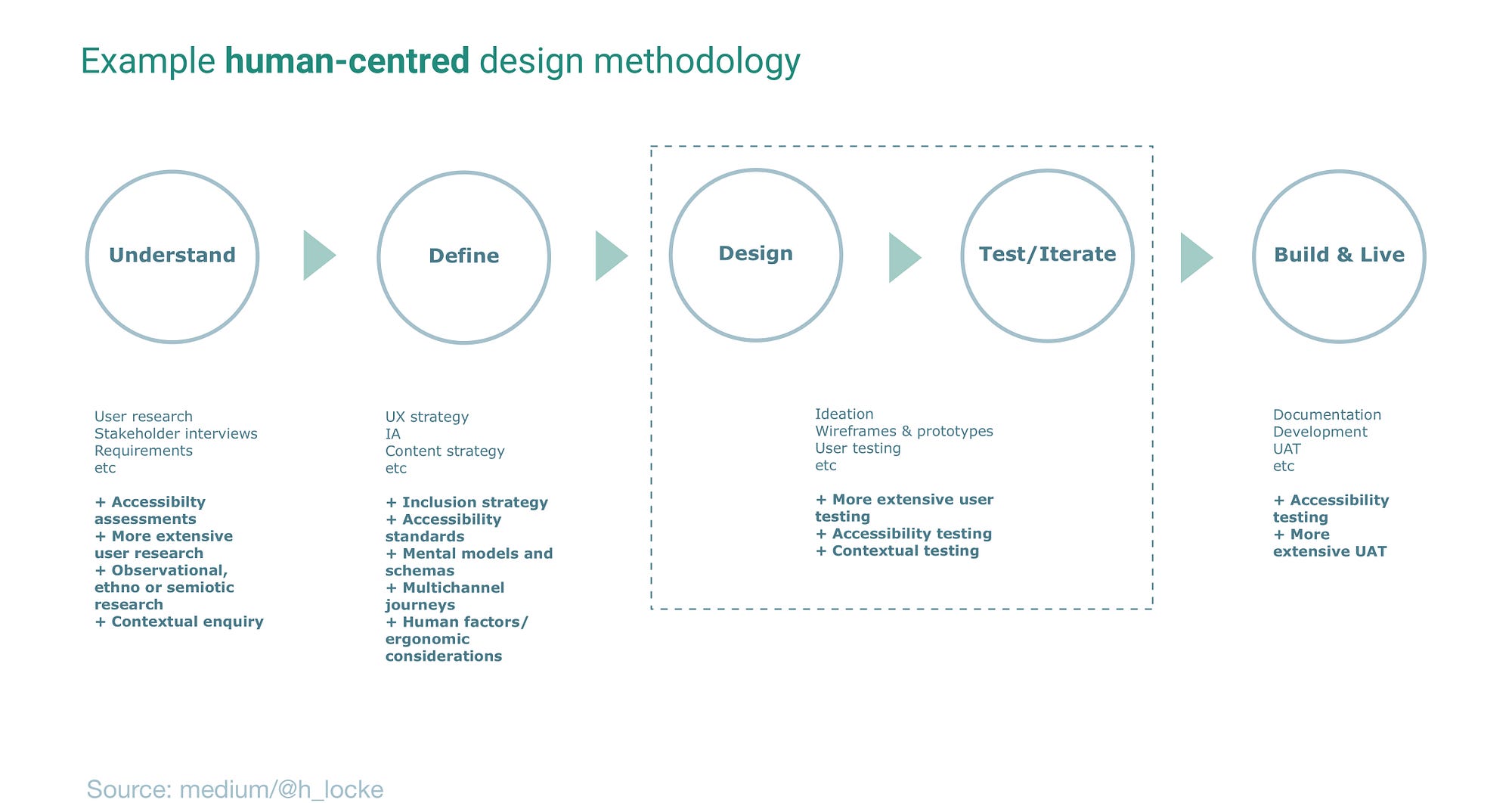

User-centred vs human-centred design
source link: https://blog.prototypr.io/user-centred-vs-human-centred-14837e3e55f5
Go to the source link to view the article. You can view the picture content, updated content and better typesetting reading experience. If the link is broken, please click the button below to view the snapshot at that time.

Responses
Also publish to my profile
There are currently no responses for this story.
Be the first to respond.
You have 2 free member-only stories left this month.
User-centred vs human-centred design
An important distinction for methodology planning

Regular readers will know that I experience the daily joy that is working in a marketing agency. Because of this, I spend a significant amount of time correcting assumptions, de-risking projects and generally UX-plaining terms that people are using inaccurately and sometimes dangerously, when it comes to project delivery.
One of the classic misconceptions that I’ve been trying to overcome for years, is the interchangeable usage of of “user-centred” and “human-centred”. To be clear, they are similar, but they are not the same thing.
User-centred and human-centred methodologies are not the same thing.
What’s the difference?
At first glance the two methodologies look similar. And at the core they use many of the same methodologies and deliverables. However there are some key differences.
User-centred
User-centred methodologies, as indicated by the name, put users at the centre of the design process. From discovery and upfront generative research with existing or target users through to user testing.
The focus is usually on understanding and designing for the predicted users or user groups of the end product.

Human-centred
Human-centred (aka universal design) methodologies aim to include all humans as possible users. This means that your design and research process needs to include not only your client’s proposed target users, but all humans — all possible users, not just a specific target. As this is an inclusive process, you naturally need to include a wider range of users to uncover every imaginable (human) need throughout the research and design process if you are to ensure accessible outcomes.

Universal or human-centred design methodologies are also often used for designing solutions beyond a single screen or isolated platform experience, where a problem exists across physical, social and societal interactions.
Why does it matter?
One classic conversation I was once in in a previous marketing agency, was “We’re going to call it human-centred, not user-centred because it sounds better, ok?”
Classic marketing. Let’s rename something without bothering to understand it (TM).
The risk here should be obvious — if you say you do human-centred design and you are not, then you are missing out swathes of activity. The implications of this are:
- Less accessible outcomes
- Less inclusive outcomes
- A failure to set client expectations
- The risk that the client could make you deliver what you promised for no incremental fee — because it’s what you said you would do.
- Human-centred design is also an ISO standard. You don’t want to be accidentally promising that to your clients.
Notwithstanding, assuming your stakeholders are human, they can argue that their needs are more important than the users. And yes, I’ve had that conversation too.
How to deal with this?
Any UX practitioner dealing with over-zealous and inaccurate use of methodologies, terminology, deliverables and more, particularly in the sales process, has a duty of care to flag any misunderstanding and associated risk. However, as I’ve said several times before, you cannot always fix sales people determined to sell nonsense because it sounds good.
You can point out the misunderstanding.
You should definitely document the risks in written format and distribute widely.
But ultimately, if you’ve done your job as a consultant and they still want to sell something misleading and risky well.. it’s not UX’s job to fix stupid.
Resources:
Characteristics of human-centred design [read online article]
What is human-centred design [Brunel. Direct download for Word.doc]
Human-centred design ISO standards [read online article]
Recommend
About Joyk
Aggregate valuable and interesting links.
Joyk means Joy of geeK